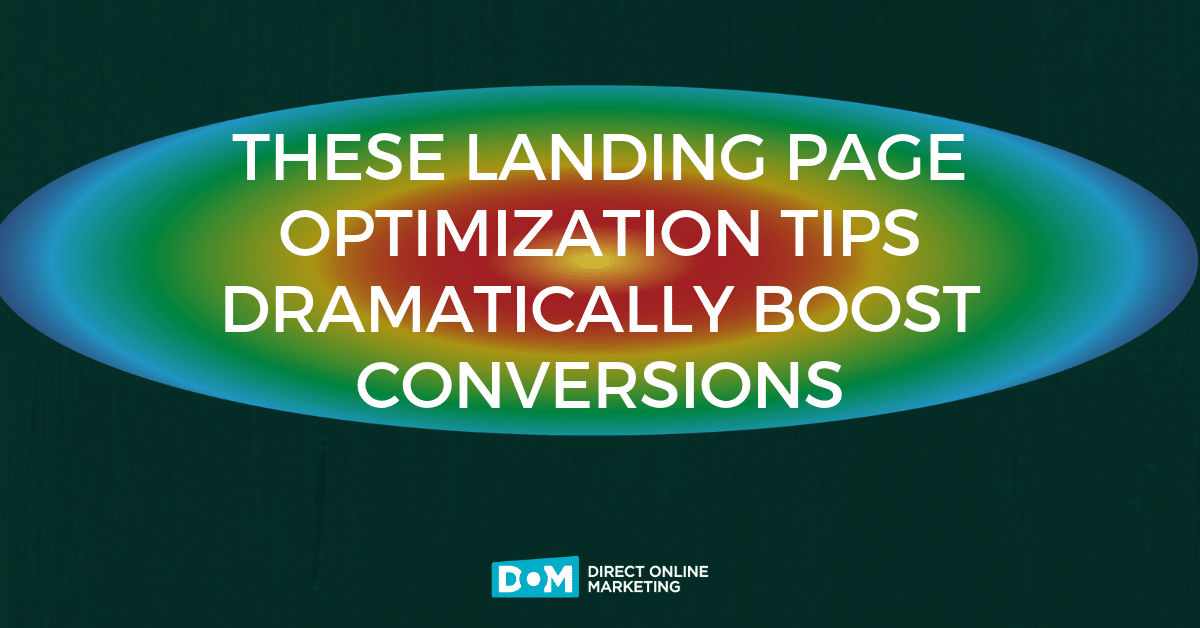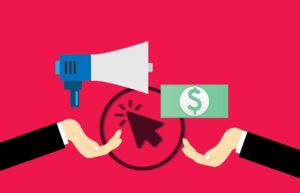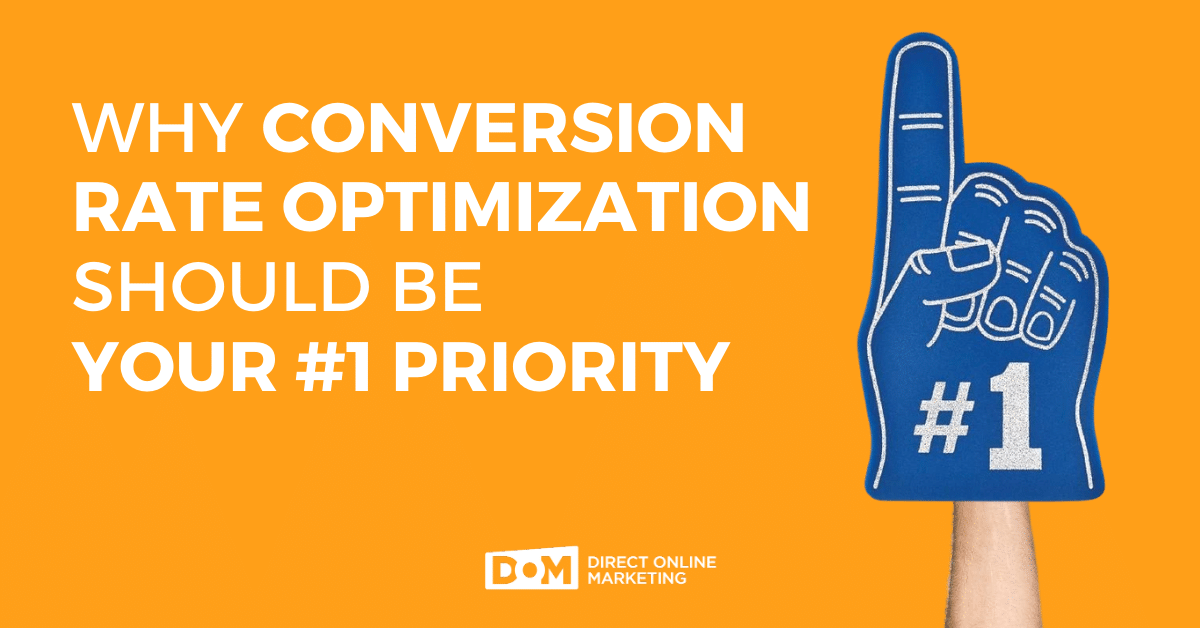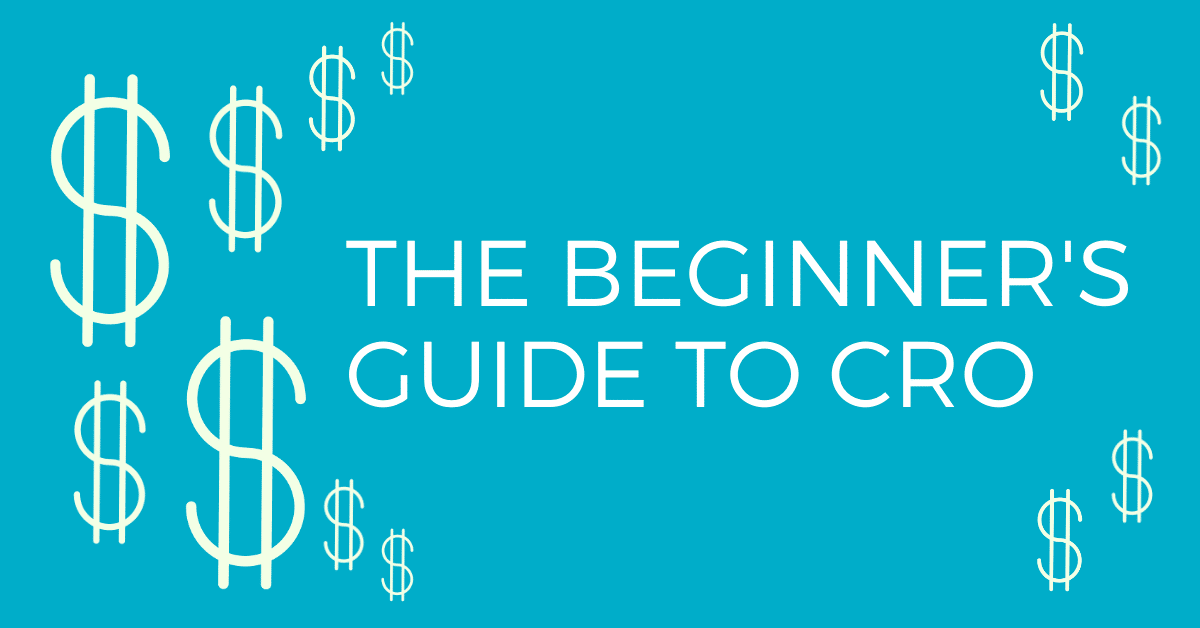
Landing page optimization drives ROI like few other website strategies do. When you properly optimize your landing page, you capture the most revenue benefit from visitors. But many site owners put their focus elsewhere and neglect their landing page. They are too busy with what’s new. So they miss what’s old.
For example, a site owner may prioritize creating new content, hoping to increase the site’s relevance and to increase user engagement. Time spent creating new content is time not spent optimizing landing pages. If your site has inbound traffic from search, you need to pay attention to the optimization health of your landing pages.
So let’s break down some concepts:
What Is a Landing Page?
A landing page is any page on your website that aims to convert a lead. (This feels remedial, I know.)
A landing page is a page where a consumer “lands” following a click. The page typically offers a product or lead opportunity. Often, a landing page is simple and to the point, so as not to risk distracting the reader from your prime objective. Most landing pages aim to get the reader to convert; this is what we will focus on.
A blog post used for lead generation, for example, which collects emails and phone numbers, can serve as a landing page. I make this distinction because sometimes blog posts are themselves landing pages, when those blog posts attempt to generate some sort of conversion. These days, many blog posts feature such lead generation forms.
What we want to understand is how to optimize a landing page to drive more conversions.
That is, how do we craft landing pages that increase leads, sales, or phone calls. With landing page optimization, we harness data-driven decision-making as a foundation for discovery.
The Basics Of Optimizing Landing Pages
You don’t know anything.
While that might be difficult to digest, the end result is that you understand your landing page optimization process begins as a blank slate. You seek to increase customers and sales; that process begins with your knowledge of your space. Your awareness and instincts are on your side; they will serve you well in the early stages of landing page optimization.
So let’s begin there.
Use Your Instincts to Design Your Landing Page
You begin by creating a landing page that reflects what you think will convert. But in doing so, you don’t become a slave to your ego. Many of you have already completed part of this step. Many site owners develop a landing page based purely on instincts. But others build a landing page based on what the competition creates. In the second case, the belief is that if another site is spending advertising dollars on a landing page, it probably works.
Either scenario is a starting point you’ve potentially breached already.
Here’s the thing—in the case where you build a landing page based on someone else’s design, you save time. But you also, therefore, gamble that someone else truly tested and optimized their landing page. What might shock you to learn is that oftentimes, landing page optimization takes a backseat to other initiatives. Few site owners spend money on a page that loses money (at least not for long), but many run landing pages that aren’t optimal.
In the second case, you fly by the seat of your creative pants. The risk, of course, is that you badly miss the mark. But, you don’t risk your landing page becoming another replication in a long line of untested landers.
So, which scenario is the basis of your current landing page? Understanding how you got to where you are impacts decisions through the landing page optimization journey.
Divide Your Landing Page Into Optimization Components
What elements of your landing page can be altered, changed, or manipulated to encourage a change in consumer behavior?
Let’s define and organize those.
Here are the primary elements of landing pages that influence consumer behavior:
- Design
- Copy
- Headlines (I separate this from copy)
- Calls to Action (CTA)
- Page Commotion
- Functionality, Load Times
- Images
All of these components interact with one another. But possessing this list allows us to classify our testing strategy. Because what would landing page optimization be without A/B testing?
Your landing page most likely comprises all of the above components. You either invented them or copied them. In either case, you know you want the ultimate result to be a more impactful funnel. So you’ll need to make small changes to each component and log the changes and compare those results.
So now let’s create a plan for each.
The Process For Optimizing Landing Pages
To begin, shall we review our current process?
The worst landing page optimization strategy is the one that’s most commonly deployed. Here it is:
“Ugh, my landing page isn’t converting.”
“Maybe it’s the blue background? Or maybe the call to action on the button sucks? Or maybe I should just go without any images at all?”
“I’m gonna do them all. Let’s shake things up.”
It’s easy to not want to act as a bystander while sales and leads are down. Stress encourages us to become reactive. When it comes to landing page optimization, being reactive and impatient is the enemy of improvement.
In the above example, too many items are manipulated to understand which value changes influence better or worse results.
The takeaway…
A solid landing page optimization process tests variables within each property against themselves. For example, if we suspect the red color background is too aggressive, we change it to a softer blue. But we change no CTAs or any other portion of the page. Then, we either A/B test, or we allow the soft blue to run full-time and compare it against previous results. So long as the traffic source remains the same, we should learn whether the background color causes any change in behavior. If we discover that the variable change results in different effects, we test colors until we find the highest converting landing page color.
After that, we move on to another landing page element.
In this way, we build on knowledge and understanding regarding what page elements move the needle.
Now, let’s explore landing page optimization elements more deeply. For simplicity’s sake, we will only refer to split-testing. But just know, you can multi-variant test these elements. It’s just a more complicated undertaking.
Create Landing Page Design For UX
Design matters. Particularly for user experience. In the modern web, less is more. While every page element is worth testing, it’s unlikely that extravagant design will win the day. Look no further than Google.com, Amazon.com, Yahoo.com, and Apple.com, for examples of content displayed in intelligent UX.
Creating a pleasant user experience impacts lead generation more than pretty designs. When you design to design, you lose. When you design to convert, you win. Design with the customer in mind, not your tastes.
Be Simple
Your landing page has one goal—convert leads/sales. Wherever your design strays from this path, it heads toward landing page dystopia. All elements of your landing page design should harness the funnel strategy. Anything else is just waste.
Monitor Length of Landing Page
A simple landing page might be a page so small and to the point that no one needs to scroll. But it could be so informational that it allows for lengthy scrolling. Depending on your product or service, either might be appropriate. A medical site might need to provide information on doctors, studies, and consumer reviews as part of the sales funnel. While a company that’s promoting the opening of a new restaurant might only need a brief amount of copy.
No matter the nature of your service or product, you can test length against itself. Maybe your landing page length distracts people and they never end up converting. Maybe your landing page length feels uninformative, so you need to offer more meat. You can test these elements against one another.
Landing Page Colors
Website colors matter. Readability matters. If the color of your landing page makes it difficult to read the text, you might lose leads. Who wants to strain their eyes to read about sofas? Likewise, colors influence emotion.
A neuroscientist by the name of Antonio Damasio carried out studies in the 1990s that proved human brains respond emotionally different depending on the color. You can read more about his work here. Damasio explored what’s known as color psychology. It’s a complex concept and one that’s often misunderstood.
What color psychology isn’t?
Your taste. What you like. What’s pretty to you. What your happy hour friend thinks “looks sharp.”
We don’t live in the 1990s anymore. We sit on an arsenal of testable elements. If it’s on the web, it can be tested. For that reason, let’s not talk best landing page colors. The data determines which colors perform the best on a given landing page.
Kyle Deming, founder of WojoDesign, believes no landing page design should go untested.
“When designing landing pages, there are certainly a number of design principles you should try to follow. Keep it visually interesting, use concise & direct language, etc. However, the only way to know for sure what design, layout, and content is effective is to test. That’s why we recommend using a tool like Optimizely or Visual Website Optimizer to conduct A/B testing on landing page projects whenever possible.” Deming told us.
“Landing pages are perfect opportunities for A/B testing. All good landing pages will have one or more measurable goals you are tracking. Plus, in most cases you are driving a consistent flow of traffic directly to each landing page. These factors make it very easy to setup valid A/B test experiments that help you learn what visitors respond to.
By all means, you should keep design principles in mind when creating your landing pages. But don’t forget to test these critical pages to make sure you are getting the best return on investment.” He continued.
Landing Page Headlines
Readers will interact with landing page headlines before almost anything else. People skim headlines hoping to find the section most relevant to them. The landing page copy, which follows this section, typically complements the headline.
Let’s think of the reader’s process as such:
- View page
- See visual headlines
- Find headline that pertains to pain point
- Read supporting copy
- Interact with CTA button or link or form
Did you read this entire article, or did you scroll to the headline that felt relevant to your need?
Headlines should be to the point and on point. Healthy headlines help improve the odds that someone will continue reading your landing page. Headlines should clearly state what the offer is about. Because the text has a larger presence, less is more. Every word should be meaningful.
You should test headline vs. headline.
Landing Page Copy Creates Value
Your landing page copy may be crushing your lead potential. It happens all the time.
First, let it be known, our use of the word “copy” should be understood as all words outside of headlines and CTA. Sure, those landing page elements are indeed, copy, but for landing page optimization testing purposes, we prefer such distinction be made.
Think of copy as the non-header font. Typically, this is the meat of your offer. Why should someone put in their credit card, email, or phone number?
Create a Value Proposition
Your copy needs to create a value proposition. If someone clicked on your landing page, read the headlines and viewed the images, they are ripe to convert. But that means the copy needs to be on point. That copy must convey a reason to convert to a customer. This means the copy entices lead generation and sales through value proposition.
Value proposition conveys a promise to the consumer.
The value proposition can and should be tested. Your product or service might feature a slew of value propositions. Maybe you need to include all the value props, such as money savings and life improvements. Or maybe a single value proposition wins leads. You can test one value proposition vs another value proposition. You can test how you pitch the same value proposition.
Improve Landing Page CTA’s
A powerful call to action remains the lifeblood of all offers. It doesn’t matter what the offer is, without a call to action that wins, the offer likely fails.
A landing page call to action displays as links, on buttons, or surrounding forms. Wherever you need an action to take place, a CTA should exist.
Here are some examples of calls to action:
- Download today
- Join now
- Time is running out, sign up today
- Be happy starting today
- I’m ready!
- Be better
- Lose weight
The list of CTA potential is endless. Therefore, landing page optimization involving CTA remains the most expansive.
To test landing page CTA, begin by creating a massive list of potential CTAs. By crafting 30 CTAs, you enable yourself to deploy split-testing or multi-variant testing over time. The landing page CTA serves to influence lead conversions as much as anything. That probably feels a bit odd considering CTAs often amount to few characters. But if you can’t provoke an action, your landing page fails.
Avoid Landing Page Distractions
Your landing page serves a single purpose—convert a lead. So why would you want to distract the potential lead from converting?
It happens more than you think. Distracting potential leads is one of the worst landing page optimization infractions around.
How does this happen?
The most common distraction is site navigation. On modern websites, header navigation deploys on each page. Such uniformity inspires a consistent site journey for the reader. But it can distract from a landing page’s mission to convert a sale.
Landing pages primarily used in advertising should remove the navigation, but keep recognizable logos.
Other distractions include:
Information overload: Don’t talk past the sale. Don’t give the reader more copy than they need or is useful.
Don’t spread information thin: Be precise in what you want the reader to do, don’t distract them with lots of options. They are on a single journey to convert as a customer for your site, not explore everything you can think of to offer.
Don’t overdesign: Their eyes need to be drawn to calls to action, not dancing gifs.
In terms of testing landing page distractions, that’s a tough one. Your page should innately be distraction-free. So you shouldn’t be testing the addition of distractions.
Landing Page Load Times, Functionality
Slow loading landing pages lose leads. These days, people don’t wait for web pages to build out and load. This isn’t a landing page element we test because in no case would a slower-loading landing page win.
So let’s just talk load time optimization tips:
Avoid Landing Page Image Duds
You should never litter a landing page with useless images. Even images should serve purposes in the funnel. Some landing pages use text on images to encourage an action. Others use images for product or brand recognition purposes.
The web and images go together like peas and carrots. If your landing page design is on point, make sure to test your images. You can test image vs image, or image vs no image, or even image copy vs image copy.
Analytics Solutions For Optimizing Your Landing Pages
Now that we understand how the landing page optimization process should flow and what variables we should cross-test, let’s look at analytics software that helps us.
Clearly, Google Analytics remains a top optimization tool for a website. However, there are other tools that assist optimization efforts. Mike Criswell, Direct Online Marketing’s CRO expert, recommends a product called Hotjar. Here’s what he had to say.
“One tool you can utilize to generate solid test ideas is HotJar. This is a user feedback and behavior analytics tool that allows you to better understand the behavior of your website visitors through heatmaps, session recordings, and surveys.
Heatmaps allow you to visualize the activity of users to specific pages of your site. You are able to see where users clicked, how far they scrolled, and where their mouse has moved. With this data, you are able to determine which elements on your page are working and which ones could use some work. Heatmaps also allow you to track the combined scroll depth of users. This can give you insights on whether your page is too long or if certain elements need to be moved higher up the page.
Recordings might be my favorite aspect of HotJar. These allow you to watch user sessions across your site and see exactly where users get frustrated and abandon the site. Using these recording to find common pain points in your site and eliminating them can help you create a very user-friendly site and boost your conversion rate.
Surveys are another great tool. HotJar surveys are sent out asynchronously to users, and they are able to complete them on their own time. These work best when paired with an action such as a purchase, where you can ask questions such as “How would you rate your experience?” or “What almost stopped you from making a purchase?” You can also create on-page polls, which are similar to surveys, except that they will pop-up on the page after a user completes an action or attempts to exit the page.
Whether you use HotJar or another similar tool, I highly suggest utilizing heatmaps, session recording, and surveys to generate a well-thought-out testing hypothesis.”
Conclusion
Landing page optimization increases lead generation. Understanding the best optimization process along with influential landing page elements creates an ecosystem of continual learning and growth. There are tools to support your optimization efforts, including free analytics tools.
Interested in discovering more ways to improve the optimization of your site? Contact us for an audit or check out any of these helpful resources written by our team below:






